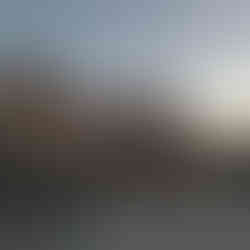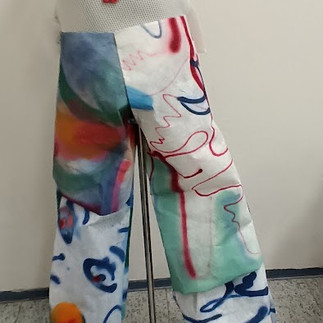Exhibition in Chemnitz: Technology, Art, and Summer Heat
- Hana Křížová
- Jul 9
- 3 min read
Updated: Jul 11

The journey to Chemnitz started off rather adventurously. The morning before departure, I was informed that in order to enter some German cities, including Chemnitz, you need an Umweltplakette – an environmental sticker that certifies the vehicle’s low emissions. Finding out on the day of departure is not ideal. You apply for it electronically in advance, but fortunately you can also get it in person – for example in Pirna, where all cars have this eco-sticker and where, after a little searching, I found myself at the traffic inspectorate. I took serial number 27 and, since it was the sixteenth car’s turn, there was a two-hour wait in the stuffy corridor of an old building without air conditioning, along with other desperate people who decided to take care of their license plate and technical certificates at the inspectorate on this hot day. After two hours, this matter was successfully resolved. The sticker was affixed to the car, and the journey could continue – albeit with a slight delay. Ironically, I couldn't find any cars in the center of Chemnitz that had it either...
Our exhibition found its place in the shop window of the small independent theater Taupunkt on Zietenstraße. The space was provided by Mrs. Heda Bayer, the theater director, who also offered practical help with great friendliness. Taupunkt is a friendly, community-oriented theater that serves as a backdrop for alternative productions, workshops, and cultural projects with overlap. The installation of the exhibition was possible thanks to the support of colleagues from TU Chemnitz - Daisy, Johannes, Kristina, and Ricardo - to whom I would like to thank once again.
Two characters - Adam and Eva - created by students, children, and researchers from the Czech Republic and Germany meet in the shop window. Adam is a model made of technical composite materials, which is used, for example, in the automotive industry, and its design was designed by Denisa Kubátová and Adrián Furťo from the Faculty of Textiles of TUL in cooperation with the MERGE Institute of Lightweight Structures at TU Chemnitz. Eva, on the other hand, has a more subtle style – the dress made of recycled plastic, silk and gold was created at the Christian Weise Gymnasium in Zittau and was dyed with gold nanoparticles in the CXI TUL laboratories.
In the gallery for this article, you can also find a picture of the children we dressed in both futuristic outfits. Eliška and Jaromír played models and posed in front of the camera. It was probably not very comfortable, especially Jaromír's vest was quite prickly, but the children took it with humor.
Decorative accessories, which used beads and pearls from Preciosa, were prepared by children from the Sokolovská Primary School in Liberec (balls created using a 3D pen on beaded curtains) and the U lesa Primary School in Nový Bor (cardboard figures in dynamic poses covered with colorful chatons). In a small space, we managed to combine the work of children and researchers from several institutions, with the connecting element being the basic points of our project - science and art, materials, technology and creativity, cross-border cooperation.
In the evening, I took a walk through the central part of Chemnitz. From Sonnenberg, I headed to the lake area called Schlossteich, from where it is only a short walk to the iconic Karl Marx monument - a massive bronze head, which is one of the symbols of the city. On the way, I passed a diverse mix of shops and businesses, the offer and atmosphere of which are more reminiscent of Istanbul than traditional Saxony. Chemnitz is today a city of contrasts - and Sonnenberg in particular: the former working-class district is transforming into a multicultural space full of new energies. On the other side, I then reached the classical modernity of the Chemnitzer Hof hotel, the nearby St. James Church and the town hall on Theaterplatz - the center of city life with classicist architecture.
Interwoven exhibition: Science – Art – Future will be on display at the Taupunkt Theater until July 15, after which it will move to the MERGE Institute for Lightweight Construction at TU Chemnitz – where some of the materials for Adam were created. We believe that fellow researchers will also appreciate how technical innovations can inspire artistic expression. The entire event was accompanied by summer extremes – including a tropical night in a guesthouse without air conditioning, when it was possible to fall asleep only well after midnight – but the result is worth it: a small but striking exhibition that connects technology, creativity and intercultural cooperation.
Hana Křížová





























































Comments